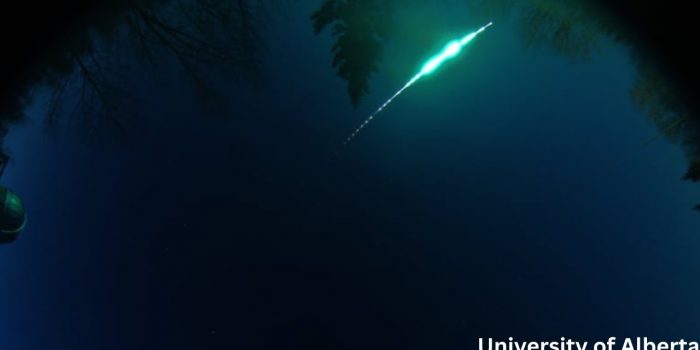Scientists have found out that the fireball that exploded over Canada last year is not the usual kind of meteor. The team has traced its origin to the Oort Cloud which is a huge sphere of icy objects way beyond the vicinity of Pluto.
It is not the first time that material from the Oort Cloud is ejected and sent inwards towards the Sun. However, this fireball exploded in a way that indicated that it was made of rock, not the chunk of frozen ammonia, methane, and water we might expect of an Oort Cloud object.
“This discovery supports an entirely different model of the formation of the Solar System, one which backs the idea that significant amounts of rocky material co-exist with icy objects within the Oort Cloud,” says physicist Denis Vida of the University of Western Ontario in Canada.
“This result is not explained by the currently favored Solar System formation models. It’s a complete game changer.”

To date, the pieces received from Oort Cloud have been extremely icy. They’re sometimes known as long-period comets, as their orbits around the Sun take hundreds to tens of millions of years.
They’re thought to have been kicked out of the Oort Cloud between 2,000 and 100,000 astronomical units from the Sun by gravitational influences.
On 22 February 2021, a fireball streaked across the sky some 100 kilometers (62 miles) north of Edmonton, Canada. It was observed and recorded by satellites and two Global Fireball Observatory cameras on Earth.
The object, Vida and his team found was around 10 centimeters (4 inches) across, with a weight of around 2 kilograms (4.4 pounds). Its burn and disintegration were exactly consistent with a rocky fireball.
However, its inbound trajectory was not consistent with the usual local meteor. In fact, it was in line with the orbit of a long-period comet.
“In 70 years of regular fireball observations, this is one of the most peculiar ever recorded. It validates the strategy of the Global Fireball Observatory established five years ago, which widened the ‘fishing net’ to?5 million square kilometers of skies and brought together scientific experts from around the globe,” says astronomer Hadrien Devillepoix of Curtin University in Australia.
“It not?only allows us to find and study?precious meteorites, but it is the only way to have a chance of catching these rarer events that are essential to understanding our Solar System.”
The researchers also searched the Meteorite Observation and Recovery Project database and published literature for possible Oort Cloud origins, and identified two other meteors: one that fell over Czechia in 1997, called the Karlštejn fireball, on an orbit similar to Halley’s Comet, and 1979 meteor MORP 441, which also had a comet-like trajectory.
“We want to explain how this rocky meteoroid ended up so far away because we want to understand our own origins. The better we understand the conditions in which the Solar System was formed, the better we understand what was necessary to spark life,” says Vida.
“We want to paint a picture, as accurately as possible, of these early moments of the Solar System that were so critical for everything that happened after.”
The research has been published in Nature Astronomy.


